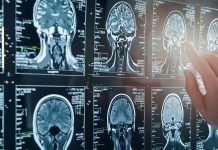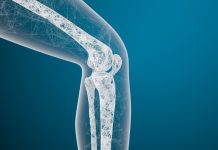Cecilia Van Cauwenberghe from Frost & Sullivan’s TechCasting Group, describes the present concern and future therapeutic perspective on Huntington’s disease
According to the World Health Organization (WHO), neurodegenerative diseases constitute one of the main causes of death in the industrialised economy. Overall, most of them are characterised by a loss of neurons in particular regions of the nervous system, the subsequent decline in cognitive and motor function associated with nerve cell loss. Furthermore, the most common denominator among neurodegenerative diseases, in addition to nerve cell loss is inflammation. Therefore, by controlling inflammation, treatment solutions should be possible. Nevertheless, although a series of mutant genes and environmental toxins are related to neurodegenerative disorders, the causal mechanisms remain poorly understood (Van Cauwenberghe, C., 2019). As a result, at present, only a few therapies are available with relatively low success. Both the clinical and scientific communities are critically devoted to developing new therapeutic approaches to treat and diagnose neurodegenerative diseases.
In particular, Huntington’s disease (HD) belongs to a group of neurodegenerative disorders characterised by progressive motor dysfunction, behavioural changes, and cognitive decline (Stahl and Feigin, 2020). According to the Huntington’s Disease Association in the United Kingdom (HDA UK), approximately 6,700 individuals in the UK are currently living with HD.
Ongoing research: Mechanisms and potential treatments
The underlying cause in the onset of HD is related to the CAG repeat expansion in the huntingtin gene (HTT), which entangles a complicated network of pathogenic mechanisms (Tabrizi et al., 2020). Modified post-translationally, mutant HTT (mHTT) upsets transcription, hence hindering the immune systems and, particularly, the mitochondrial function. Dysfunctional mitochondria need to be degraded precisely in a process called mitophagy to keep neuronal homeostasis (Franco-Iborra et al., 2020); therefore, the role of HTT is in mitophagy in the progression of the disease.
The identification of sensitive biomarkers is fundamental to advance HD therapeutics (Wijeratne et al., 2020). Genome-wide association studies (GWAS) have helped to identify potential DNA repair pathways for neuroprotective treatment. These proteins, capable of repairing mismatch DNA, amend the rate of somatic expansion of CAG repeats in the huntingtin gene (HTT). Similarly, novel biomarkers cerebrospinal fluid (CSF) and plasma biomarkers may detect changes in patients before the first symptoms are manifested. Additional neuroprotective actions can be carried out by delivering non-allele-selective antisense oligonucleotides (ASOs) to reduce HTT concentrations in the central nervous system in patients with HD.
Other strategies to lower HTT concentrations are based on gene editing strategies, including zinc finger nucleases (ZFN), transcription activator-like effector nucleases (TALEN), and clustered regularly interspaced short palindromic repeats (CRISPR)-Cas9 techniques, as well as breakthrough technologies related to gene therapy and stem cells reprogramming, including single-stranded RNAs, mismatch-containing RNAs, antisense oligonucleotide (ASO), and small hairpin RNA (shRNA). These novel tools come with unique opportunities to use induced pluripotent stem cells (iPSCs) from a patient’s own cells as the ideal cell source for personalised stem cell replacement therapy (Van Cauwenberghe, C., 2019). RNA interference co-opts a natural system of RNA destruction to target the huntingtin RNA. As a challenging factor, this approach needs a vector, typically a virus, to carry the RNA sequence of interest. This vector is injected into the brain regions affected by HD. Therefore, an invasive neurosurgical procedure is needed. Synthetic ASOs have been employed to turn off genes for more than three decades. In particular, synthetic ASOs to treat HD are designed to block the ability of the sense huntingtin sequence to produce its protein. Although ASOs have been very promising in the past decades, they usually work for a limited period of time. The reason is that they are degraded quickly, hence making therapeutic interventions difficult. Synthetic ASOs are being conceived as potential therapies for HD, strongly improving their stability and safety.
The road ahead: Innovative solutions for HD patients
The present treatments for neurodegenerative diseases are palliative in most cases (Van Cauwenberghe, C., 2019). Major approaches only target a small subset of the population and exhibit poor or null alterations in the disease progression toward permanent disability or death. Because HD is caused by overactivity in dopaminergic nigrostriatal pathways, its treatment is based on drugs that impair the dopaminergic transmission either by depleting central monoamines, Reserpine (Serpadil) or blocking dopamine receptors, phenothiazines (Haldol, Trilafon).
Three innovative approaches for HD on the market are the result of the collaboration of the following companies: 1) Roche and Ionis, to develop IONIS-HTTRx, antisense, gene silencing technology, a non-selective approach, single product, which would cover all genetic variations due to ingle-nucleotide polymorphisms (SNPs) that are associated with HD; 2) Wave and Takeda, with their products WVE-120101 and WVE-120102, antisense, gene silencing technology (mHTT transcripts only), a selective approach with multiple drug candidates, tested in multiple clinical trials, which would provide improved safety profiles versus non-selective HTT drugs; 3) Voyager and uniQure, to deliver microRNA-based strategies to attach the RNA interference (RNAi) pathway to silence HTT and mHTT expression via viral vectors to deliver gene therapies.
Acknowledgements
I would like to thank all contributors from industry involved with the development and delivery of this article from Frost & Sullivan.
Further reading
- Franco-Iborra, S., Plaza-Zabala, A., Montpeyo, M., Sebastian, D., Vila, M. and Martinez-Vicente, M., 2020. Mutant HTT (huntingtin) impairs mitophagy in a cellular model of Huntington disease. Autophagy, pp.1-18.
- Stahl, C.M. and Feigin, A., 2020. Medical, Surgical, and Genetic Treatment of Huntington Disease. Neurologic clinics, 38(2), pp.367-378.
- Tabrizi, S.J., Flower, M.D., Ross, C.A. and Wild, E.J., 2020. Huntington disease: new insights into molecular pathogenesis and therapeutic opportunities. Nature Reviews Neurology, 16(10), pp.529-546.
- Van Cauwenberghe, C., 2019. Emerging Therapeutics for Neurodegenerative Diseases – Part II: Novel Targeted Therapeutic Strategies Technologies for Huntington’s Disease and Amyotrophic Lateral Sclerosis – From Palliative to Future Interventions. Frost & Sullivan TechVision Analysis. D8EE-TV
- Wijeratne, P.A., Johnson, E.B., Eshaghi, A., Aksman, L., Gregory, S., Johnson, H.J., Poudel, G.R., Mohan, A., Sampaio, C., Georgiou‐Karistianis, N. and Paulsen, J.S., 2020. Robust markers and sample sizes for multicenter trials of Huntington disease. Annals of neurology, 87(5), pp.751-762.
A U.S. vision for a future free of HD
The Huntington’s Disease Society of America (HDSA) aims to improve the lives of all impacted by Huntington’s disease (HD) and their families. HDSA’s vision is clear: a world free of HD. (1) So what is HD? HD is a brain disease passed down through the generations, caused by an error in the “DNA instructions that build our bodies and keep them running.” Unfortunately, HD causes deterioration of our mental, physical and emotional abilities, normally during our prime working years. (2)
While no cure or treatment for HD currently exists, many interventions and treatments are available to assist in the management of symptoms. Certainly, an expert psychiatrist, neurologist or nurse can prescribe medications to ease depression and anxiety, and help with troublesome behaviours, for example. A social worker or psychologist can give counselling to an individual or group. Physical and occupational therapists work with patients and families to move safely, develop strength and adjust the home environment as needed. Also, speech-language pathologists and nutritionists are helpful when it comes to communication, eating and swallowing safely plus tackling weight loss. Family and friends often assume many of the HD person’s former responsibilities and help with daily care activities. (3)
The HDSA recommends that at-risk individuals considering genetic testing do so at a genetic testing centre that follows the guidelines of HDSA. Until a cure exists, the best possible way to fight back against HD is to take part in the research process, HDSA says. They explain more about HD research, which links in with their ultimate vision: “When you join a clinical trial, you have an opportunity to participate in vital research that could change the course of this disease and improve the lives of all those it affects. Your participation in clinical trials provides hope for today and promise for a future free of HD.” (4)
References








